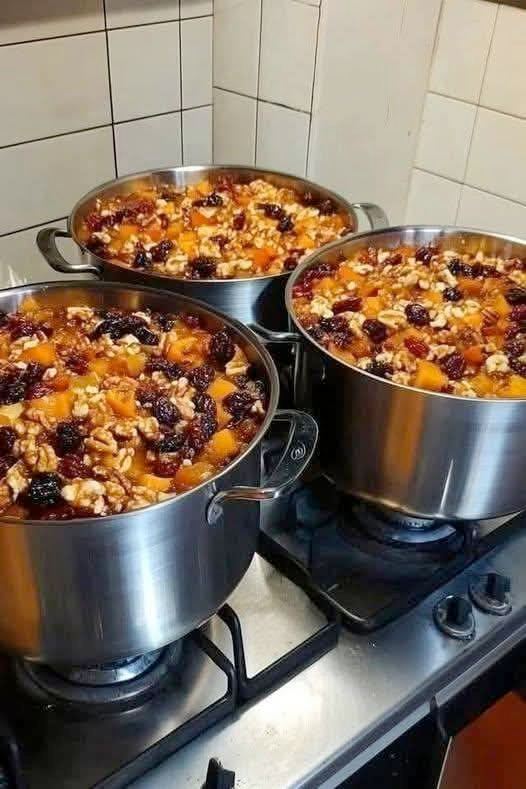ADVERTISEMENT
### Instructions:
1. **Prepare the Bread**:
Begin by slicing the bolillos into small, 1-inch pieces. If you prefer a firmer texture, slightly stale bread works best. Lay the bread pieces out on a baking sheet and toast them in the oven at 350°F for about 10 minutes or until lightly browned.
2. **Make the Syrup**:
In a saucepan, combine the brown sugar, water, cinnamon stick, and cloves. Heat over medium heat, stirring until the sugar dissolves. Once dissolved, lower the heat and let the syrup simmer for about 10 minutes to infuse the flavors of the cinnamon and cloves.
3. **Layer the Capirotada**:
In a large baking dish, begin by placing a layer of the toasted bread. Sprinkle a handful of raisins, chopped nuts, coconut, and a little grated cheese on top. Repeat the process, making several layers of bread and fillings.
4. **Pour the Syrup**:
Once you have your layers, pour the hot syrup evenly over the bread. The syrup should soak into the bread, but don’t worry if some of it remains on top. The bread will absorb the syrup, and the layers will soften into a rich, flavorful dessert.
5. **Add the Eggs**:
Beat the eggs and pour them over the layered bread, making sure they’re evenly distributed. The eggs will help bind everything together as it bakes.
6. **Bake the Capirotada**:
Cover the baking dish with foil and bake the Capirotada in a preheated 350°F oven for 45 minutes. After 45 minutes, remove the foil and bake for an additional 10 minutes until the top is golden brown and the edges are slightly crisp.
7. **Let it Cool**:
Allow the Capirotada to cool for a few minutes before serving. While it’s delicious served warm, it also holds up well at room temperature, making it perfect for family gatherings and holiday feasts.
### Grandma’s Secret Ingredient: Love
What truly makes Grandma’s Capirotada recipe unforgettable isn’t just the combination of flavors and ingredients—it’s the love and care that’s poured into it. It’s the time spent assembling the layers with a steady hand, the special memories of stirring the syrup on the stove, and the joy of sharing it with family.
Capirotada, like so many family recipes, connects the past with the present. For many, the aroma of the spices and the golden layers of bread bring back memories of holidays, family reunions, and cherished moments with loved ones.
### Variations of Capirotada
Though Grandma’s version is special, Capirotada has regional variations and countless twists depending on family traditions. Some may add extra fruits like apples or peaches, while others might swap in a different type of cheese. In some regions, a splash of rum or brandy might be added for depth, or chocolate chips can be mixed into the layers for an indulgent treat.
However you choose to make it, the heart of Capirotada remains the same: bringing family together through shared flavors and memories.
### Why Capirotada is More Than Just a Dessert
In Mexico, Capirotada is often associated with Lent, as the ingredients are simple, relatively inexpensive, and satisfying. However, this dessert is a staple at any time of the year, especially for family gatherings, Easter, or Day of the Dead celebrations.
What’s truly magical about Grandma’s Capirotada is that it represents a deep sense of home, tradition, and culture. It’s a dish that reflects the flavors of history, passed down and adapted with each new generation. For anyone lucky enough to taste it, it’s a reminder that food isn’t just about ingredients—it’s about connections, memories, and the love that goes into every bite.
**Conclusion**
Whether you’re baking it for a holiday, a special occasion, or just because you want to enjoy a piece of family tradition, Grandma’s Capirotada is a comforting treat that never fails to bring people together. With its rich, spiced syrup, toasted bread, raisins, and crunchy nuts, it’s a dessert that’s both nostalgic and heartwarming, an ode to generations past and present.
Try this recipe today, and enjoy the sweet, satisfying comfort of Capirotada—just like Grandma used to make.
ADVERTISEMENT
